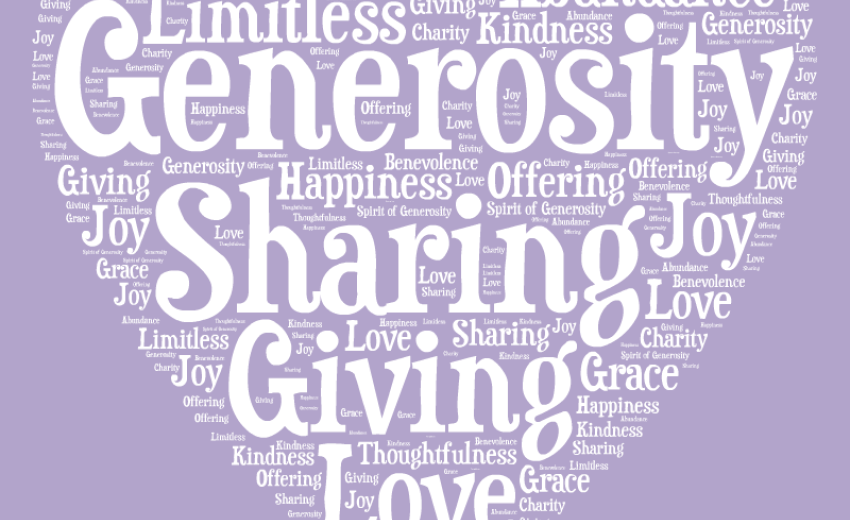VAND CHHAKNA: The Sikh Way of Sharing & Caring
I.J. Singh
If asked to provide a Cliff Notes version of the Sikh way of life — the pitch to be no longer than a short “elevator ride,” I think most Sikhs would opt for the popular triad: Naam japna, Kirt karni, Vand chhakna.
To wit, an honestly lived life with its bounties cheerfully shared with the needy, and for both of these practices to be driven by an ever-present awareness of the Creator in us all.
Note that while naam japna, refers to spiritual discipline, the other two attributes are strictly social constructs that serve to cement a community. This formula of Sikhi then interlinks the spiritual and societal imperatives. These two realities, the worldly and the spiritual, must never be sundered. This integrated concept, captured by the meeri-peeri doctrine, remains fundamental to the Sikh way of life.
I would be hard put to pin down exactly when and where this catchy triad became the defining marker of Sikhi, but we trace these fundamentals to the teachings of Guru Nanak, at the beginning of Sikhi over 500 years ago.
In Sikh tradition, this three-legged stool makes a uniquely integrated approach to life and any analysis should treat it as such. Even though each of its three legs is equally critical and indispensible to a stable stool, today, I will zero in on only one of the three legs — giving and sharing. I leave the other two for another day.

In a rough and ready translation, Chhakna is to consume, and the qualifier Vand asks that we do so by sharing life’s rewards with others. Why such a stipulation?
It is self-evident that individual humans are neither strong enough nor fast enough to outrun or overcome the existential dangers that surround us. Human survival and progress demand the formation of collectives and communities of shared bonds.
Modern sociological scholarship tells us that religions are the glue that binds a people into communities with their distinct practices, traditions, cultures, cuisine, music, indeed their identity and ethos. Traditions become sacred because they define the community life and provide the underpinnings of survival mechanisms for a people. Distinct practices also define boundaries between neighboring communities, much like fences between good neighbors. They never should become hermetically sealed impenetrable barriers. This is why and how families, tribes, communities and nations take root and grow.
So how do we strengthen the bonds of a people within a community? The idea of sharing and caring within families and communities is not new or unique with Sikhi; it is universal and transcends local, regional and social barriers.
Marcus Aurelius, the second century Christian icon reminds us, “It is in giving that we receive.” But this idea antedates his time. It is rightly said that though one can give without loving, one cannot love without giving.
Life teaches us that we owe our successes more to the kindness of friends and strangers than to any efforts or talents of our own. The only way then to even partially repay the debt is to return the kindness to another — a stranger in need. Thus the cycle of gifts – given and taken – continues unabated, much as life does.
Sharing and giving are existential imperatives for mankind, no matter how prosperous or how economically deprived a people and their community. But how do you go about designing a system so that both the “haves” and the “have nots” can see that they are in the same leaky boat, and so that the boat sails well and safely only when both tend to its needs.
Secular governments use a system of taxation to provide for a people’s shared needs of security, law, education, healthcare, institutions and infrastructure. A similar system in religions — “tithing” — is a principle of faith rather than finance.
Abraham and Jacob are said to have pledged to God one-tenth of their profits (Hebrews 7:1–10; Genesis 14:19–20; 28:20–22). We are further asked to give, not grudgingly, for God loves a cheerful giver (Corinthians 9:7).
Through tithing, religions underwrite worthy causes ranging from building churches to feeding the homeless; schools and hospitals, missionary work, and literature etc. Both material and spiritual blessings are often promised as rewards.
Most, if not all, religions have such a system in place for the common good even though I have briefly touched only the Christian model here.
A prominent feature of Sikhi is the concept of seva, or service; it is a cardinal virtue of a Sikh life. This service is not to be limited exclusively to Sikhs. It can be rendered in monetary donations, goods and/or services.
A notable aspect of seva is that it NOT be undertaken in the hope of reward or recognition on earth or in heaven. But human nature being what it is, many do-gooders hope for earthly rewards or find fault with the intents of others.
I leave this matter largely untouched except to say that the best seva remains one that is done to meet a need, not of the service provider but of the needy where the seva is directed.
In Sikhi, the financial underpinning of any and all seva comes from the precept of dasvandh which exhorts every Sikh to earmark ten percent of his earnings for community service. Interestingly, over the past three decades, many prominent economists and U.S. presidential candidates have argued for a ten percent flat tax to replace our hopelessly convoluted tax structure.
I offer you only four Gurbani citations from the myriad that are available. The Guru Granth urges us to lose the self in service of a cause bigger than the self — aap gavaye seva karay ta kitch paaye maan (p. 474). It further asks us to follow the honest path of work and seva in this world; for therein is the Creator’s approval (Vitch duniya sev kamaaye ta dargeh baesan paaye, p. 26). It goes on to emphasize that God is found in selfless service (Seva karat ho-ey nihkamee. Tis kau hoat praapat suamee, p. 286). And finally, one knows the true way if he earns his daily bread honestly and contributes some to the needy (Ghaal khaaey kitch hathon dey, Nanak raah pehchhanay saye, Guru Granth p. 1245).
The Sikh Langar, usually labeled an act of seva, is the free meal that follows every Sikh service in well nigh every Gurdwara in the world. It is simple and vegetarian so that anyone of any religious or ethical persuasion can easily accept.
The traditional Indian (Hindu) society has been, for ages, divided along hereditary, vertically stratified lines of caste in which the high and low castes do not sit together and never break bread together nor even accept food prepared or served by someone of low caste; and never, ever attend the same religious service together. These impenetrable barriers had to be demolished and the Gurus chose Langar as the method.
This free meal is prepared and served by volunteers in the Gurdwara. The larger Gurdwaras in Punjab may serve as many as 100,000 meals a day. The poor and the rich sit together, as do the high and the low caste. The homeless sit side-by-side with the robber barons of society and the starving hordes sit with the overfed. The meal is simple fare to assuage hunger of the needy.
However times are a changing. In the Gurdwaras of the American diaspora, the menu is becoming increasingly complex and rich; the simplicity is disappearing, the hungry and homeless are nowhere to be found; the repast befits a bash that some cynics refer to as the “one dollar buffet.” Sometimes the langar is catered.
Yet many avenues for sharing and caring remain. New immigrants arriving at American shores often need mastery of a new language and cultural skills, as well as some familiarity with the Constitutional structure of the United States or Canada.
Perhaps lesser seva is needed within the Gurdwara and more outside of it in our interactions with the wider non-Sikh community. Ultimately our goal is not to assimilate beyond recognition but more to integrate into defining an equal place at the table of this society.
Towards this end our progress is visible but limited, and much work remains.
For instance, the Sikh Coalition and SALDEF are profitably engrossed with societal and legal institutions to forge an equal place for Sikhs. United Sikhs and Khalsa Aid, though small, have been at the forefront of relief efforts in the face of Katrina, Tsunami, and Earthquake in Haiti and Nepal, and now even Kurdish refugees in Iraq. The Sikh Research Institute is focused on the internal development of the Sikh community and SikhNet is focused on spreading understanding of the Guru’s message in the context of the modern world and sharing the living experience of Sikhi with all.
I think of the time of Guru Gobind Singh when Bhai Ghanyya was commended by the Guru for serving the wounded soldiers in battle regardless of whether they were Sikh or enemy soldiers. Sporadic efforts at feeding the homeless irrespective of their religion do exist and are proliferating. Periodic educational initiatives and health fairs serve people of all religions and backgrounds, but they are few and far between.
It is also seva when lawyers work at subsistence wages to advance our civil rights. And there are the unpaid volunteers who run Sunday schools and Symposia to teach the fundamentals of Sikhi, in and out of Gurdwaras, across the world. I salute these volunteers.
I want to take special note of SikhNet which was the first website serving Sikhs worldwide. It is now celebrating its 20th anniversary while morphing into the largest Sikh site in the world, reaching over 600,000 users each month and hosting a wide variety of discussion topics in Sikh history and traditions; issues of immigration, racial and cultural matters, including matters of integration and assimilation. Sikhnet provides a wide array of services to Sikhs and Sikhi, including translations of Gurbani, an extensive library of Gurbani music as well as information on current political and social issues as well as providing a Sikh matrimonial service. Its most widely used service is the daily Hukumnama alongside a translation into serviceable English. It has a worldwide readership — possibly the largest of any Sikh portal, and it provides all these services basically for free. Personally, my morning starts with it every day. Many more Sikh web sites now exist.
What SikhNet does, as I see it, is to interweave our ethnic and isolated Sikh communities across the world into a complex pattern where the whole is greater than the sum of the parts.
And in all these varied initiatives viability demands resources and donations that transcend the needs of survival. Vand Chhakna becomes an act of Love recognizing the common Creator in both friends and foes. This principle is also reflected in our communal Ardass.
It is rightly said that there are three kinds of givers: the flint, the sponge and the honeycomb. One has to vigorously hammer the flint to get shards and sparks. The sponge: the harder you squeeze it the more it delivers. The honeycomb, however, just overflows with its own sweet kindness.
The question is what kind of givers and sharers are we?
In closing I offer you a few factoids. According to the Arton Capital Major Giving Index, the typical ultra-high net worth philanthropist donates $25 million over his lifetime — more than 10% of net worth. Typically, American households donate $3,000 annually to charity, the report said.
None of us can row the boat alone — certainly not very far and not for long. Vand Chako — Come and share the bounties of life!
Erich Fromm reminds us that “Giving is the highest form of potency” and Bob Hope warns us that “If you haven’t got any charity in your heart. You have the worst kind of heart trouble.”
December 1, 2015





